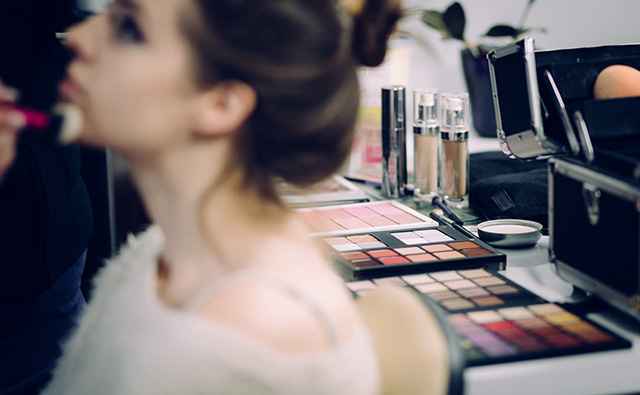Industry News, Cosmetics & Persnoal Cares
COSMETICS: A SUPPLY CHAIN WORTH 15 BILLION EUROS

Industry News, Cosmetics & Persnoal Cares

The non-cyclical nature of the cosmetics industry is once again demonstrated by the preliminary 2016 figures, which show a global turnover of 10.5 billion euros for the sector, a growth of 5%.
The results confirm the key role of exports in rising production figures, with an increase of more than 12% and a value of nearly 4,300 million euros. Despite the increase in imports, the trade balance has hit a new record, reaching 2,300 million euros.
The overall picture of the cosmetics supply chain as a whole is also significant, and an analysis of the various “links” in this chain (ingredients, machinery, packaging, finished product) reveals a total turnover of over 15 billion euros (+5%).
“The ongoing uncertainty which still characterises the political and economic situation has not held the cosmetics industry back, and the continued investment in innovation and in the qualification of the production capacity of the supply chain serves to confirm the structural strength of this key Made in Italy sector – comments Fabio Rossello, President of Cosmetica Italia – The consumption of cosmetics in Italy has grown by 0.5%, confirming the fact that these products are viewed as essential. In addition, new consumption patterns have contributed to this growth, generating new purchase options.”
Indeed, this evolution can be seen in action when we take a closer look at the various channels of cosmetic products, both newer and more traditional channels, prompted by new consumer behaviours. The case of direct sales (both door-to-door and mail-order) is a prime example, with this sector continuing to demonstrate above-average trends, due to the impact of e-commerce: rates of growth in this area reached +8%, with a sales value of more than 750 million euros.
The professional channels are also beginning to recover, following a comprehensive review of the product offering, along with new forms of service. Beauty salons have also seen a rise in consumption of 2.1% for a value of 230 million euros, while hairdressing salons have been subject to 1% growth (563 million euros).
Perfume shops (which account for 20.4% of the total consumption of cosmetics in Italy) have also shown signs of a slight recovery (+ 0.9%), and the value of this channel now amounts to 2,018 million euros; meanwhile, pharmacies (which are just behind perfume shops in terms of representativeness of consumption), appear to have reached a stalemate: sales of cosmetics in pharmacies fell by -0.1% (although the sales figures for this area remain above the 1,800 million euro mark).
In the wake of increased consumer interest in the world of “natural” and “green” products, the results for herbalist stores demonstrate a growth of more than one percentage point, with a value of over 430 million euros. Elsewhere, however, mass market sales have suffered as a result of uneven internal trends, shrinking by -0.8%, taking the value of this channel to around 4,500 million euros.
An analysis of product consumption trends highlights the significant growth of lipsticks and lip glosses (+8.5%), followed by foundations and coloured creams (+5%) and, albeit to a lesser extent in terms of value, by liners and pencils (+5%).
With regard to product families, body care products are still in the lead in terms of Italian consumer trends, and despite a negative trend approaching -2% compared to the 2015 figures, this family represents 16.6% of total sales, for a value of 1,383 million euros.
Some data may help to better understand the value of the sector: our country is fourth for cosmetics markets after Germany, the United Kingdom and France with 35,000 people employed, which total 200,000 counting downstream activities.
54% of those employed in the sector are women (about 19,000), while the manufacturing industry average is stable at 28%.
The total number of university graduates among the employed is 11% against a national average of 6%, and the women with a university degree number about 1,700, 45% of those with university degrees in the sector. In addition to workers specialized in pharmaceutical chemistry and cosmetology, many are specialized in economy and marketing.
Regarding innovation and technology, the research and development that the cosmetics companies in Italy invest is about 7% of the turnover against a national average estimated to be about 3%.
Moreover, let’s not forget that cosmetics covers 44% of investments in communication of “non food” assets, and that 60% of the makeup distributed in the world is produced in Italy, testifying to a rich and dynamic production fabric with highest concentration of cosmetics companies in northern Italy.
Specifically, Lombardy stands as the region with the highest concentration of cosmetics companies with over 51% (54% of the Lombard cosmetics companies are in the Milan area), followed by Emilia Romagna, Veneto and Piedmont.
The export/production ratio was equal to 40.8% at year-end 2016, but there are still wide margins for the sector’s internationalization processes. Since 2000 the growth of exports has been higher than the growth of the cosmetic demand, testifying the rise of the Italian competitiveness in this field.